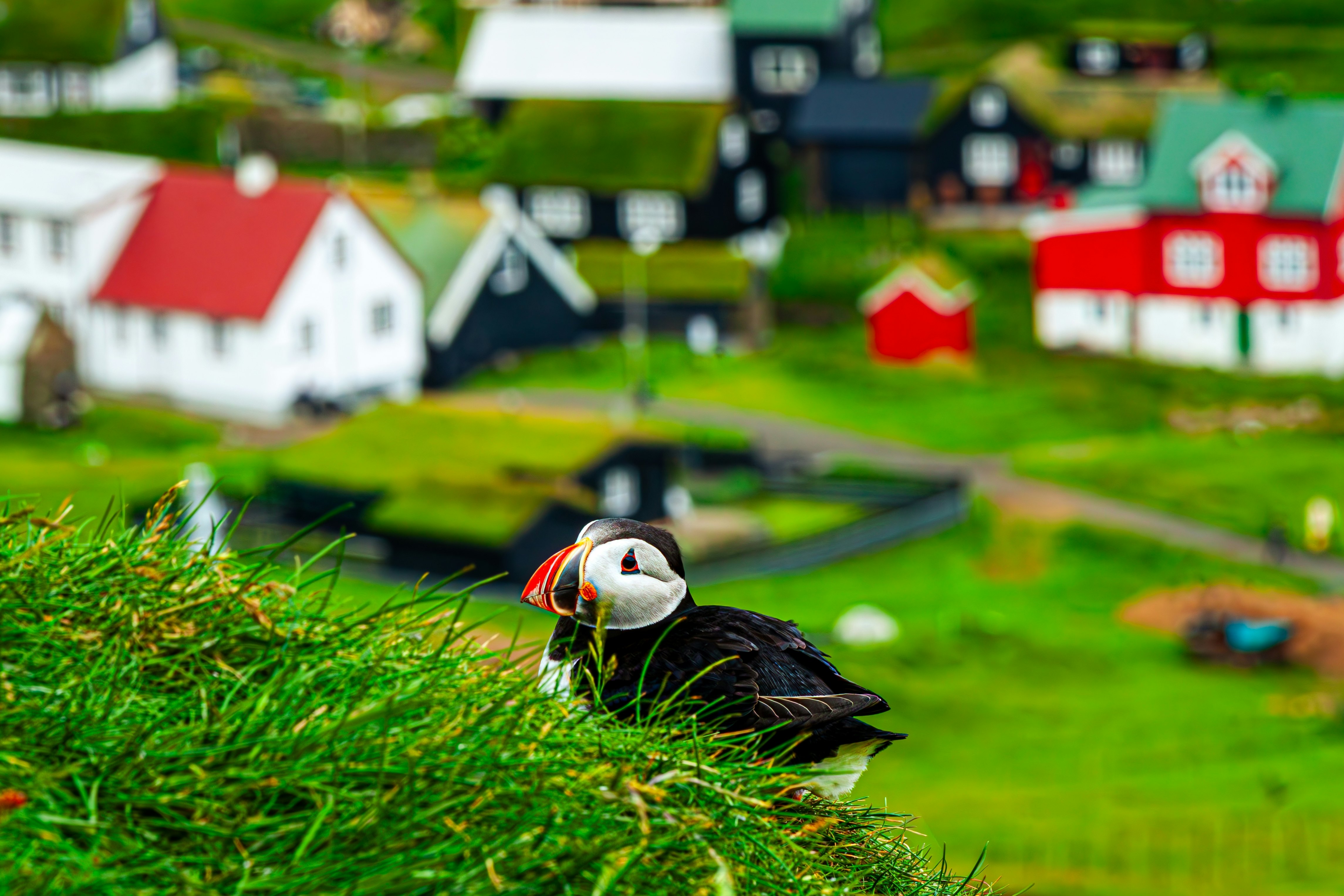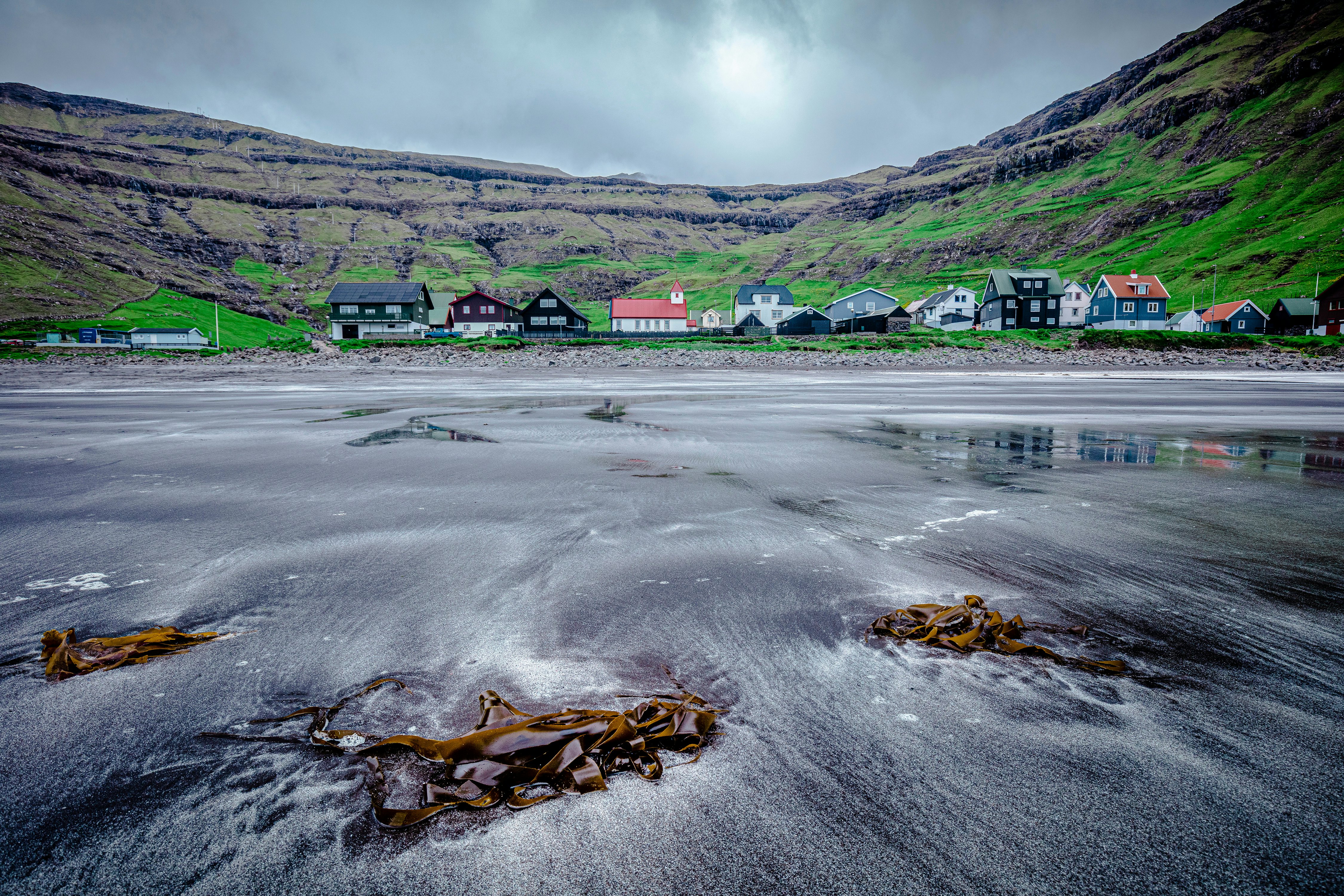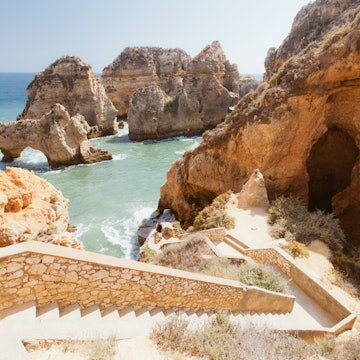

Tjørnuvík, the Faroe Islands. Luster Designs/Shutterstock
Nothing makes you feel the force of nature like a stay in the Faroe Islands. For a start, those volcanic, moss-clad mountains with boulders the size of houses on their sharp slopes make you feel as small as an ant. Add to that torrents of water pouring down them on rainy days, powerful winds, ever-changing skies, and dark sea stacks set like paper cut-outs against the horizon, and you get the picture. It is like nowhere else on Earth.
Lose yourself in epic nature by driving the country’s looping roads. Take to the water and explore searching for colonies of seabirds, shoals of fish and views of incredible islands. Amp it up and scale the extreme and extraordinary peaks – from the top of one, you can see Iceland on a good day. It’s all weather-dependent of course: everything here depends which way the wind is blowing.
Thanks to a tourism strategy that seeks to balance island life and wide-eyed visitors, there are myriad ways to get beyond hotels to see what it’s like to live here, with authentic supper clubs, music nights and at-home knitting experiences. Here are the Faroe Islands' best things to do.

1. Be bewitched by birdlife
If you’re in the Faroe Islands between April and September, you will likely see puffins – adorable little black and white birds with orange feet and multicolored bills – flapping around the cliffs, or walking around their burrows on Mykines. A two-hour cruise from Vestmanna village takes you to Vestmanna bird cliffs, dark caves and towering sea stacks, all thronged with sea birds in the summer months. Bring a camera and keep an eye out for puffin, guillemot and kittiwake.
Planning tip: Mykines is one of the most popular spots on the whole of the Faroe Islands in summer. Make sure you book your boat trip there well ahead of time to avoid being disappointed.
2. Go wild swimming at Gamla Hoyvík
Take a dip in the wild seas of the North Atlantic, where the water temperature is a challenging 8°C (47°F) year-round. There’s a concrete pier with ladders down to the water at Gamla Hoyvík. Joining a tour by Rib62 gives you access to a sauna, with essential oils, and a hot tub with a view out to sea. The water is super clear, and just around the headland there are rocks where you often spot seals reclining.

3. Lace up your boots and hike the trails
Hiking the old cairn-marked trails is one of the most popular activities in the Faroe Islands. On a good day, there’s nothing like walking up a ridge in search of the best view of a lighthouse, or eating sandwiches mid-trail with a view of dark sea stacks and a silver sea.
A couple of excellent hikes to consider are the two-hour round-trip walk to Lake Sørvágsvatn (also called Lake Leitisvatn) as it is flat and easy for less experienced hikers. Alternatively, go all out and hike the Slættaratindur mountain (the island’s highest) in search of views of Iceland.
Planning tip: Sustainable tourism fees introduced in 2024 are added to accommodation costs, with some of the money going towards maintaining hiking trails. However, many of the most popular trails will still charge an extra fee.
4. Enjoy a home-cooked dinner
The heimabliðni is a key Faroese experience. This supper club, where visitors are hosted by a local family or individual, is a place to taste the freshest lamb and fish – or even traditional whale meat, if you're comfortable with that – along with rhubarb-flavored desserts, while listening to stories of life on the islands. Far more than a dinner, you’ll get a window into the way life here, and a chance to go deeper into the Faroe Islands’ generous culture.
Planning tip: Eatlocal.fo is the best website to find heimabliðni options, with prices from 325kr. Book as far in advance as you can.

5. Take surf lessons on a black-sand beach
Local surfers Kali and Andras run surf classes from their shack on the black-sand beach at Tjørnuvík, in full view of mythical sea stacks and monumental mountains. It’s pretty epic. If the surf isn’t pumping, alternative options include stand-up paddleboarding (SUP), snorkeling tours and cliff jumping.
Planning tip: Bring your own food for the day. There’s a public toilet but very little else in Tjørnuvík so don’t get caught out.
6. Attend a tiny concert
The Hoyma Festival harks back to a tradition of taking music from house to house, and playing in a living room to a small audience. Held in September or October each year, this intimate experience – with 20 acoustic concerts played by 10 different artists in 10 different family homes – is unique to these islands.
Planning tip: The concert series takes place in Syðrugøta, home to July’s G Festival. There are a handful of rental options nearby via Airbnb; or stay in Klaksvík, a 17-minute drive away.

7. Feel the spray of a waterfall on your face
It’s a classic Faroe Islands experience: not just seeing a waterfall from your car, but hiking to one and feeling the spray on your face. The islands’ top two most-visited waterfalls are Fossá near Haldarsvik on Streymoy Island, and Múlafossur in Gásadalur on Vágar Island.
Fossá is the highest of all, a two-step waterfall pouring down a black basalt cliff; Múlafossur falls directly into the sea in a highly scenic spot.
8. Catch your own dinner
Fishing tours take place all over the islands. Join a local skipper and sink a hook into the ocean to catch some fish for dinner. This isn’t only a fun day out, you will learn where your food is coming from. You’ll also get an insight into life on these islands, where fishing makes up 95% of the economy and where traditional fishing communities continue to exist.
Planning tip: It is possible to combine home-dining with a fishing trip, where your host will cook the fish you have caught that day.

9. See how steady your sea legs are
Whether it’s a ferry across from Tórshavn to Nólsoy Island, a kayak around a lake, a fishing tour, or a trip around Drangarnir sea arch, getting out on the water is a quintessential Faroese experience. For a really special way to see the islands, a private sailboat can take you around the coast from Tórshavn. Alternatively, amp up the adrenaline with a RIB-boat safari around Kalsoy Island, as featured in the James Bond film No Time To Die (2021).
Planning tip: You can buy anti-seasickness tablets over the counter in any Apotek (pharmacy) in Tórshavn.
10. Learn to knit
There’s an old Faroese saying that wool is gold. Learning how to knit your own jumper on these windy, inclement isles in the home of a local teacher is the ultimate way to get under the skin of the country and its culture. Like any knitting club, there’s a great social element to it, with coffee, tea, cake and chat to keep you going.
Planning tip: There are some beautiful wool shops in Tórshavn including Tógvhúsið where you can buy Faroese wool to knit with at home.
11. Relax in a Faroese spa
Hotel Foroyar in Tórshavn has a modern spa that offers a range of treatments including hot stone therapy and massages. The spa has saunas, pools, a steam bath, ice bath and outdoor hot tub, all with incredible island views. It even offers a special massage and treatment for those with sore legs after hiking all week.
Local tip: An alternative way to use water as a therapy is to do what the locals do: go sea swimming. The sea hovers between 6℃ and 10℃ (42℉ and 50℉) year-round, so be prepared.














